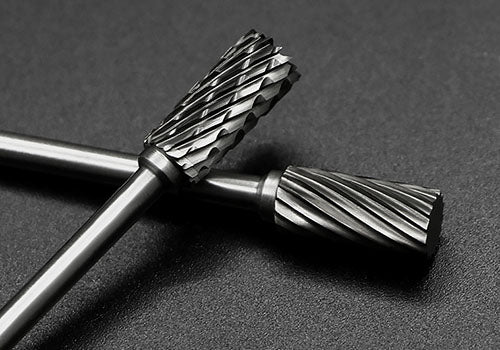
Exploring the Diversity of Carbide Burrs: A Guide to Different Types
Share
Introduction: Carbide burrs are versatile cutting tools with a wide range of applications, thanks to their ability to shape, grind, and sculpt various materials with precision. One of the key factors contributing to their versatility is the diversity of types available. In this guide, we'll delve into the different types of carbide burrs, their unique characteristics, and the specific tasks they excel at.
Understanding Types of Carbide Burrs:
1. Single Cut Burrs:
- These burrs feature a single set of teeth arranged in a linear pattern along the cutting head.
- Ideal for quick material removal and less likely to clog compared to double cut burrs.
- Suitable for softer materials such as plastics, wood, and non-ferrous metals.
2. Double Cut Burrs:
- Double cut burrs have two sets of teeth intersecting at right angles, forming a crosshatch pattern on the cutting head.
- Provide smoother finishes and finer cuts compared to single cut burrs.
- Ideal for harder materials like steel, stainless steel, and cast iron, as well as precision work that requires a high level of detail.
3. Shapes of Carbide Burrs:
- Cylindrical Burrs: Feature a cylindrical shape with rounded ends, suitable for contouring, shaping, and deburring.
- Ball Burrs: Have a spherical shape, ideal for carving, sculpting, and blending contours.
- Tree Burrs: Resemble the shape of a tree, with a pointed tip and flared base, perfect for accessing tight spaces and shaping concave surfaces.
- Flame Burrs: Feature a flame-like shape with a tapered end, ideal for creating chamfers and bevels.
- Cone Burrs: Have a conical shape, suitable for deburring, countersinking, and enlarging holes.
Applications of Different Types of Carbide Burrs:
- Single cut burrs are commonly used for rapid material removal in applications such as weld preparation, shaping, and grinding softer materials.
- Double cut burrs are preferred for precision work, fine detailing, and finishing tasks in industries like aerospace, automotive, and jewelry making.
- Each shape of carbide burr is tailored to specific tasks, from rough shaping to intricate detailing, catering to the diverse needs of craftsmen, machinists, and hobbyists.
Conclusion: The diversity of carbide burrs offers a solution for every cutting, shaping, and grinding need, from rough material removal to intricate detailing. By understanding the characteristics of each type and choosing the right one for the task at hand, craftsmen, artisans, and manufacturers can achieve superior results with precision and efficiency.




